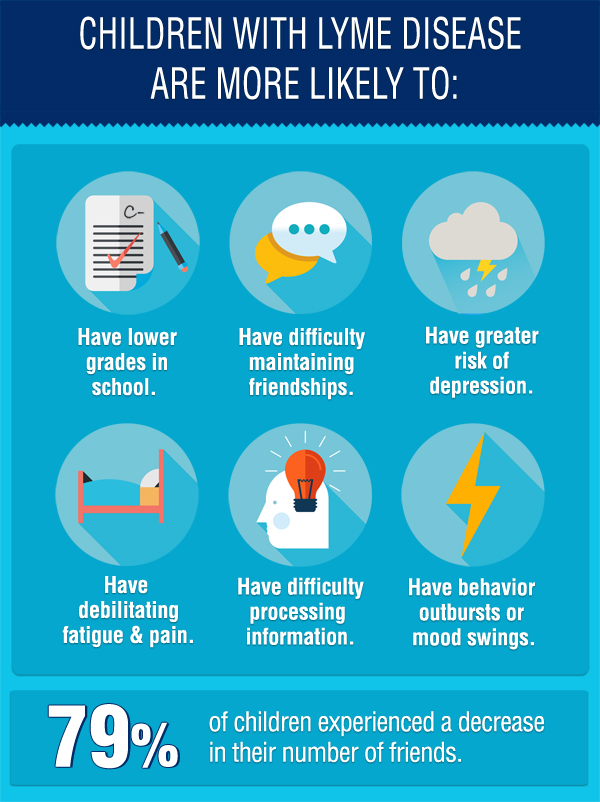-
There are 300,000 new cases of Lyme disease reported in the U.S. every year.
Although, experts believe the actual number is much higher. Lyme disease is the fastest growing vector-borne disease in the country. The tick-borne illness has always posed the greatest threat to residents living in the Northeast and upper Midwest.
-
-
These regions have the highest number of reported cases, according to the CDC. But, Lyme has been reported in every state in the country, as ticks spread to new geographic regions. Infection rates, for example, are on the rise in Canada, a country once believed to be free of Lyme disease.
No one is immune to Lyme disease, even if they’ve been bitten in the past. Anyone, at any age can develop the disease, but children are at a particularly high risk. In fact, they make up 25% of all reported cases, with the highest reported incidence of Lyme occurring in kids, ages 5 to 14. [1]
How is Lyme disease transmitted?
Lyme disease is caused by Borrelia burgdorferi (Bb), a spiral-shaped bacteria (referred to as a ‘spirochete’), that can be transmitted to humans through the bite of an infected blacklegged tick (deer tick or Ixodes scapularis). The Lyme bacterium is named after the scientist who discovered it, Dr. Willy Burgdorfer.
Once a tick attaches, it begins to feed on its host (your child). As it feeds, the tick can transmit any disease carrying bacteria into the hosts bloodstream. Not all deer ticks carry the Lyme pathogen. Certain regions appear to have higher rates of ticks infected with the bacteria than others.
Note: If you’d like to know whether your neighborhood has a high rate of infected ticks, consider calling several local veterinarians. Ask them if they’re treating a lot of Lyme disease in pets. If the answer is yes, you may want to be extra cautious.
Once the spirochete enter the bloodstream, they disseminate quickly throughout the body. Shaped like a cork-screw, the spirochete burrow deep into tissues and organs, where they can lay dormant for months, or even years. The bacteria can impact any organ in the body including the brain, nervous system, muscles, joints and heart.
Diagnosing Lyme disease
Lyme disease is considered the ‘great imitator’ because of its ability to mimic so many other illnesses. It is difficult to diagnose, in part, because its symptoms overlap with other complex conditions, including fibromyalgia, chronic fatigue syndrome, lupus, multiple sclerosis, juvenile arthritis, and attention deficit hyperactivity disorder (ADHD).
Diagnosing Lyme in children can be particularly challenging. Several common misdiagnoses in kids with Lyme disease include: juvenile arthritis, ADHD, oppositional defiant disorder (ODD), phobias, anxiety, allergies, and food sensitivities. [2]
Lyme disease is diagnosed based on a child’s symptoms and a history of possible exposure to deer ticks. Some physicians will mistakenly rely solely on the presence of the bulls-eye rash before making a Lyme disease diagnosis and starting treatment. Laboratory blood tests may be helpful in supporting the diagnosis, but tests can be inaccurate.
References
[1] Centers for Disease Control and Prevention
[2] Dr. Charles Ray Jones, clinical experience
-
Lyme Disease Videos
-
Dr. Willy Burgdorfer interviewExcerpts from interview with Willy Burgdorfer, PhD. Dr. Burgdorfer discovered the bacteria that causes Lyme disease. He passed away in 2014.
-
View spirochetes in actionView the spirochetes that cause Lyme disease.
-
Lyme disease: What is Going On?Video clip of Norwegian man diagnosed with Lyme disease. Scientists and physicians are interviewed.
-
Dr Horowitz Lyme Disease and Chronic IllnessDr. Horowitz discusses Lyme disease.
-



